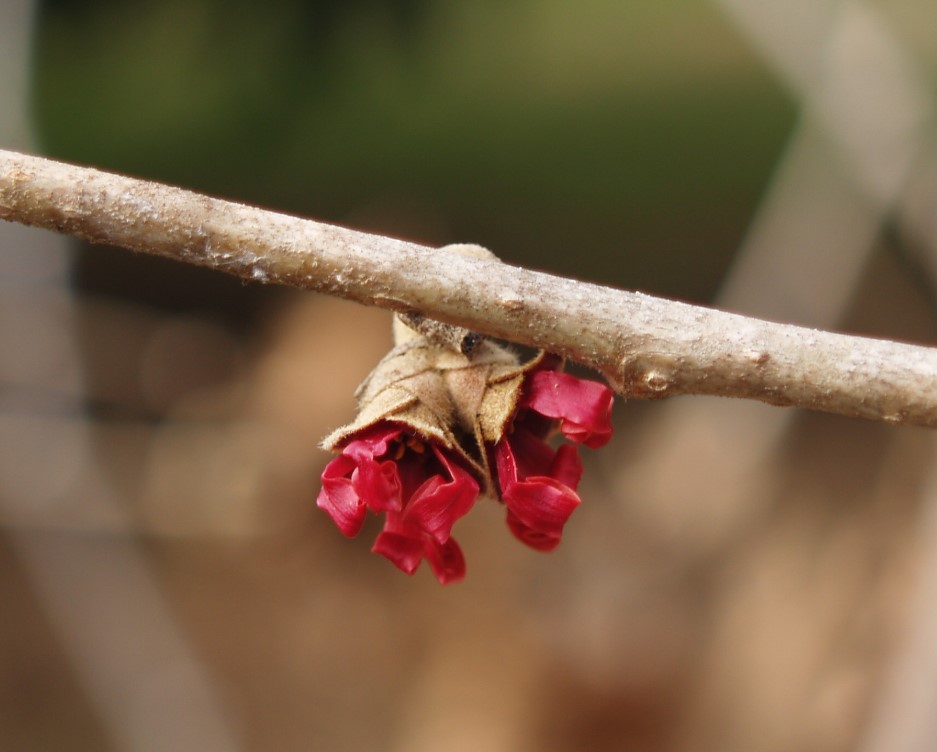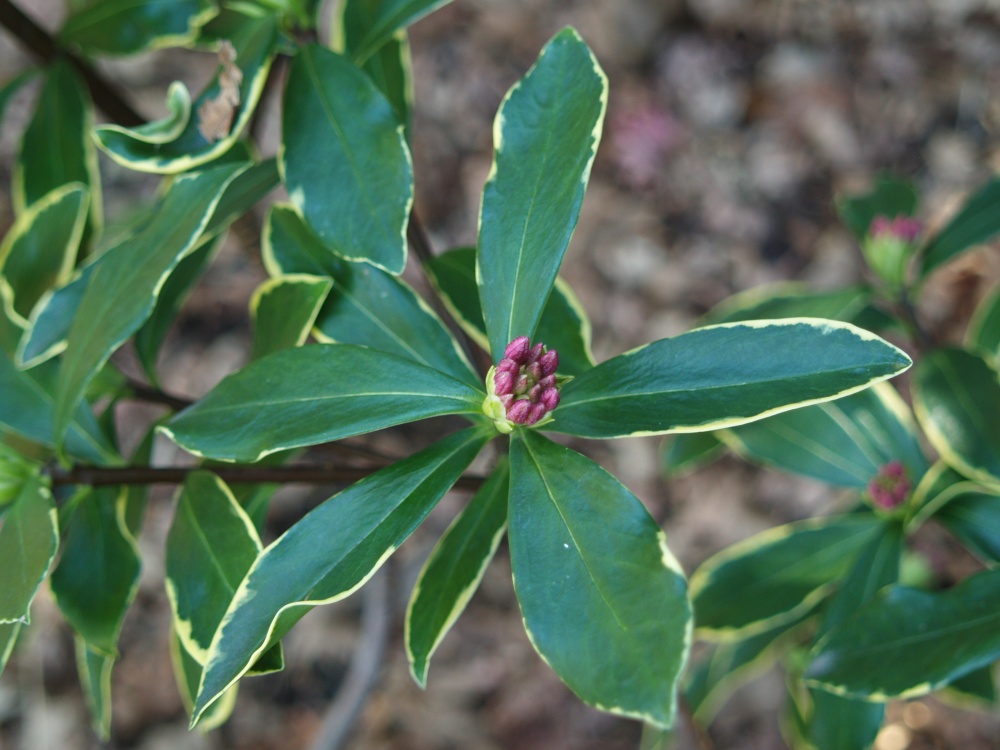This week, another warmer than usual winter is disguised by a heavy blanket of frost. On a cold, blustery January afternoon the garden’s flowers don’t make the shivering temperatures feel any warmer, but they promise that spring is nearer by the day. On average, the coldest temperatures of the winter are the second week of January, so despite the current freeze there should be a slight upswing each week until spring arrives.
The flowers of ‘Winter Sun’ mahonia and winter blooming hybrid camellias are on their way out, but the Vernal witch hazel (Hamamelis vernalis, above) is flowering today and its peak bloom is in late January. There are hints that the larger, brighter blooms of the hybrid witch hazels are beginning to open (Hamamelis x intermedia ‘Diane’, below), but it will be a few weeks until they are fully in flower. The ribbon-like flowers of the vernal witch hazel are smaller, and the duller color doesn’t pop out, even against the gray winter sky. Still, they are potently fragrant on a still winter afternoon.
Witch hazels in general are easy to grow, and suffer no pest or disease problems to bother about as long as they aren’t planted in an excessively damp spot. All four of the witch hazels in my garden are in damper than average soil, and the hybrid ‘Arnold Promise’ (the photo in the header) is in a spot that’s wetter than I’d recommend, but it hasn’t had a problem at all. They are a little slow, though not terribly so, but the result is that they are a little more expensive to purchase than most other shrubs. The flowers of vernal witch hazel don’t make as big a show as the hybrids, but it flowers a month earlier when there are fewer other blooms around.
The paperbush (Edgeworthia chrysantha, below) is showing the first bit of color, though barely so. With each week starting in late January the yellow tips of the tubular flowers will begin to open until they are fully in bloom at the end of February. The flowers will often persist into late March. I’ve read that the blooms are fragrant, but the scent is faint enough that I can’t smell it at all. But, the flowers are large, and plentiful, and these have become my favorite late winter bloomer.
When I first planted edgeworthia it was as a trial since I had been warned that it was only marginally cold hardy. But, it has weathered recent winters without a hitch, with only minor damage to a few flower buds when temperatures dropped a degree or two below zero a few years ago. It has grown like a weed in a range of dry and damp soil conditions, but in mostly full sun. Three small shrubs have each grown wider (to almost ten feet) and a bit taller than references claim to be their mature size. On each shrub there are hundreds of flower buds that first appear in mid autumn while it is fully leafed. The buds slowly increase in size, and by December they stand out against the bare stems.

Variegated Winter daphne (Daphne odora ‘Aureo-marginata’, above) exhibits handsome glossy foliage through the winter, with pink flower buds that tease that they will open in mid January. But, it is not until late February, or even the first of March before the fragrant flowers open. Daphnes are reported to be particular about planting and transplanting, but I’ve had no problems with winter daphne or the spring flowering ‘Carole Mackie’. They suffer from no disease or insect problems that I’ve seen, but I suppose there’s something to the warnings so I’d recommend particular care in siting and planting (though I paid no attention to either).